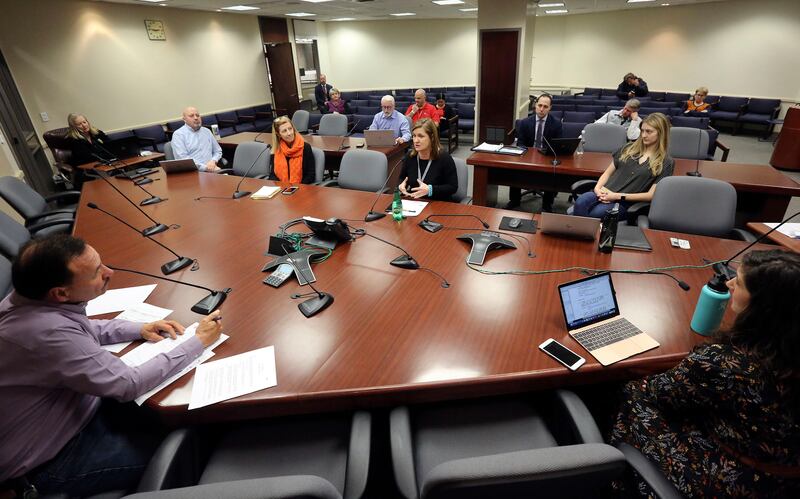SALT LAKE CITY — Public health officials have advised Americans to maintain six feet of social distance to slow the spread of the novel coronavirus, but new research asks if that’s enough.
Could droplets laden with novel coronavirus travel more than four times further than previously believed? A researcher from the Massachusetts Institute of Technology thinks in some cases, that might be true.
In research published in JAMA Insights, Lydia Bourouiba, associate professor at MIT, writes that the model driving current guidance on social distancing to stop the spread of respiratory infection was developed in the 1930s.
She notes recommendations by the World Health Organization that health care workers and others stay at least 3 feet from someone who is showing symptoms like coughing and sneezing, while the Centers for Disease Control and Prevention broadens the distance to 6 feet.
In the United States, health experts and officials say to stay at least 6 feet from others, whether they show symptoms or not, to avoid possible transmission of infection even from those who may not show symptoms. Other cornerstones of public health advice for slowing the spread of novel coronavirus spread center on excellent and frequent hand-washing, disinfecting surfaces, not touching one’s face and generally isolating oneself as much as possible.
The distance guidelines may fall short, the researcher suggests. “However, these distances are based on estimates of range that have not considered the possible presence of a high-momentum cloud carrying the droplets long distances,” Bourouiba writes in the journal article.
Her own estimate is based on what she called a “turbulent puff cloud dynamic model.”
“Given various combinations of an individual patient’s physiology and environmental conditions, such as humidity and temperature, the gas cloud and its payload of pathogen-bearing droplets of all sizes can travel 23 to 27 feet.
“For these and other reasons, wearing of appropriate personal protection equipment is vitally important for healthcare workers caring for patients who may be infected, even if they are farther than 6 feet away from a patient,” she added.
Dr. Anthony Fauci, director of the National Institute of Allergy & Infectious Diseases, pushed back against Bourouiba’s assessment during a media briefing at the White House Tuesday. He said it would take a “very, very robust, vigorous, achoo sneeze” to propel droplets a fraction of that distance, demonstrating with his own make-believe sneeze.
Advice on hampering the spread of novel coronavirus varies. To help readers sort through it, the Deseret News has created a “COVID-19 Survival Guide,” updated regularly, that collects the latest advice on cleaning, treatment, symptoms, caring for someone who’s ill, testing and more.
What else is new?
- Utah has seen seven deaths from COVID-19.
- Utah had 1,012 lab-confirmed cases and had conducted 20,155 tests for the novel coronavirus by Wednesday afternoon. The infections include 22 visitors to Utah.
State epidemiologist Dr. Angela Dunn said about 5% of those tested are positive and of those, roughly 10% need hospitalized.
- In Utah, 91 patients have been hospitalized as a result of the virus, according to the Utah Department of Health.
- In the U.S., records show 203,608 cases and 4,476 deaths as of Wednesday morning, according to a daily count by Johns Hopkins University. Numbers change constantly and there’s some disagreement between sources, which might just stem from the time of day each count was done. The virus has been diagnosed in all 50 states, the District of Columbia, Puerto Rico, Guam and U.S. Virgin Islands.
- At least 905,279 people have been confirmed as infected worldwide and 45,497 have died as of early Wednesday morning, the Johns Hopkins count shows. The illness is now lab-confirmed in 180 countries. There are reportedly 195 countries in all.


